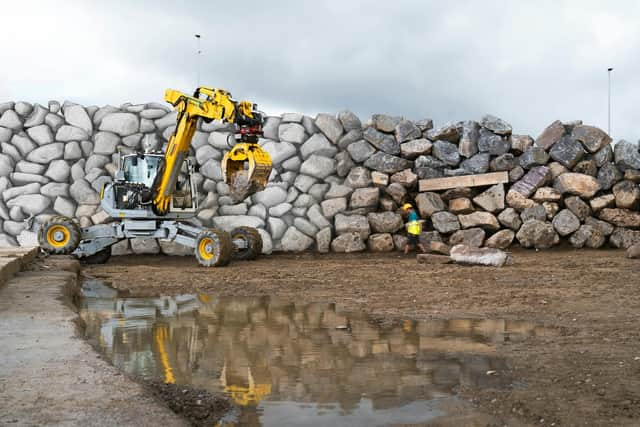Robot excavator builds a six metre high, 65 metre long dry stone wall
And it shows that robots could change the future of construction, making the process faster and better for the environment.
Dry stone wall construction usually involves vast amounts of manual labour, but this new robot called HEAP (Hydraulic Excavator for an Autonomous Purpose) may change that.
Advertisement
Hide AdAdvertisement
Hide AdUsing sensors, the excavator can draw a 3D map of the construction site and localise existing building blocks and stones for the wall's construction.


The excavator then can scan and grab large stones in its immediate environment and register their approximate weight as well as their centre of gravity.
An algorithm determines the best position for each stone, and the excavator places the stones in the desired location.
The autonomous machine can place 20 to 30 stones in a single consignment, which is about as many as one delivery could supply.
Advertisement
Hide AdAdvertisement
Hide AdThe robot will save not only time but the environment too, with this new process significantly reducing carbon emissions.
Study author Dr Lauren Vasey, from ETH Zurich, said: "As the building industry is a major contributor to global greenhouse emissions, it is critical to leverage new technologies toward more sustainable building practices. One such avenue is to rethink and reshape the embodied energy of material systems that are used in construction.
"In particular, developments in on-site robotic building methods offer the opportunity to leverage context-specific, locally sourced or upcycled materials that are inexpensive, abundant, and low in embodied energy. The aim of the research behind the robotic stone wall is to autonomously construct masonry structures on an architectural scale, using found and readily available materials such as waste, concrete and stones."
The wall is in a robotically excavated park called Circularity Park in Oberglatt, Switzerland which is fully accessible to the public.
The park was conceptualised and built within a year in 2021 to demonstrate advancements in robotics and architecture. The full study has been published in the journal Science Robotics.